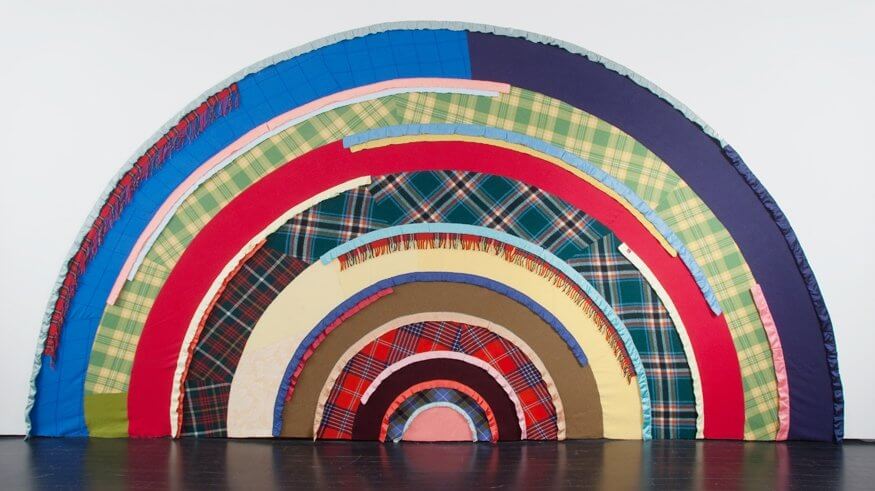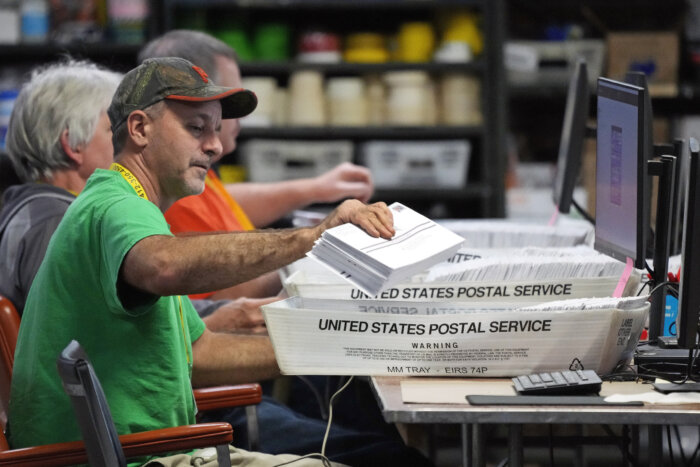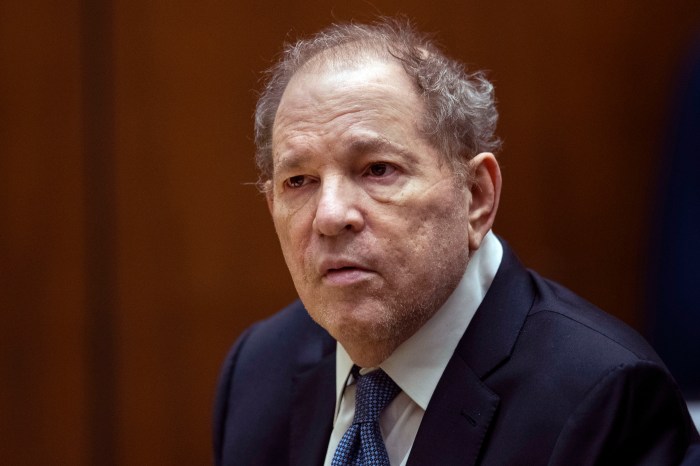
Before talking about the exhibition preview for “Taking Space: Contemporary Women Artists and the Politics of Scale,” at the Pennsylvania Academy of the Fine Arts (PAFA) on March 11, co-curators Dr. Brittany Webb and Jodi Throckmorton remind me of a fact most pertinent to Women’s History Month.
“Every day is related to women’s history at PAFA,” said Throckmorton, PAFA’s Curator of Contemporary Art. “On March 11, our plan is to introduce you to the themes of the larger show and get into the detail of between 15 to 20 of the artworks, all of which are in our collection—that’s incredible.”
Webb, the curator of the John Rhoden Collection, followed that with the fact that having “several female PAFA alumni” as part of March 11’s show and tell—as well as the July exhibition—is equally incredible.
The co-curators on Wednesday are looking to build excitement during Women’s History Month, for July’s “Taking Space,” and its large scale look at women artists for whom space is a critical feature of their work, “whether they take the space on a wall, the real estate of a room through sculpture and installation, engage seriality as a spatial visual practice, cast a wide legacy in art history or claim the space of their body.”
What each of the 30+ contributing women artists of “Taking Space,” had to have or say as part of their work was the ability to politicize space directly, or for the viewer to consider said space.
“For some artists, we’re considering what it means to make large work—work that requires more than a little real estate in a gallery—or work that has a certain amount of ambition that you can see,” said Webb. “We’re thinking about the space of the body, how artist contend with that. We’re also thinking about space in the geography of the built environment where the work is a commentary on public space or feminist architecture or seriality… What are the politics in repeating a theme, for instance?”
What is different about “Taking Space,” and what allowed them such thought and care in regard to each woman’s commentary—featured artists include Joan Brown, Mary Frank, Barbara Kruger and Louise Nevelson—is that every piece comes directly from PAFA’s massive collection of work.
“That allowed us immediate access and direct contact regarding how each of these works might go together as a group,” said Throckmorton. “Taking Space” does have historical precedent as well – if you think about the women of the Abstract Expressionist movement in the early 20th Century, scale was a way of asserting that they were just as good as the men. That’s our inspiration point.”
The March 11 conversation and show-and-tell allows the interested viewer a chance they rarely get: to see how collections are built and managed and exhibitions are curated.
“All of the research that we do, how to look at it and discuss it internally, making arguments for why it makes sense in a permanent collection—viewers never get to see or hear how we make the important decisions,” said Webb. “This is one way to get our thinking out there. Plus, this exhibition will feature so many large pieces that our audience have never seen… “Taking Space” is a way of showing off. Jodi won’t say this for herself, but she has been collecting contemporary women’s work and making new acquisitions quite ambitiously.”
Throckmorton laughs when I call giving such devotion in the PAFA collection and the “Taking Space” exhibition, “putting one’s money where one’s mouth is.” She stated that “this shows that, at every level of the institution of PAFA – the museum especially – we believe in women artists. We’re really conscious of that.”
“It is really important to take seriously the amount of space that women take up,” said Webb, reminding us that, even in the immediate past, women were historically marginalized when it came to museums’ exhibition and collections opportunities.
The message then, behind the March 11 chat and its larger July exhibition is, “To take fundamentally seriously who has the right to imagine themselves as an artist, to actualize the identity of the world by taking up the space in a classroom, to own geography of the studio space, that it deserves an audience, and intellectual attention There’s something deeply political about all of that.”
Get a sneak peek at “Taking Space: Contemporary Women Artists and the Politics of Scale” at the Pennsylvania Academy of the Fine Arts’ Samuel M.V. Hamilton Building on Wednesday, March 11, at noon. For information, visit pafa.org.
































